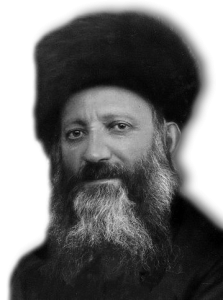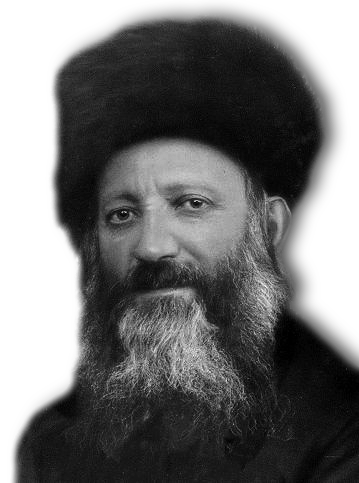Avraham Yitzchak Kook ( 8 September 1865 – 11 September 1935) was an Orthodox rabbi, the first Ashkenazi chief rabbi of British Mandatory Palestine, the founder of Yeshiva Mercaz HaRav Kook (The Central Universal Yeshiva), a Jewish thinker, Halakhist, Kabbalist, and a renowned Torah scholar. He was one of the most celebrated and influential rabbis of the 20th century.
Kook was born in Griva in the Courland Governorate of the Russian Empire in 1865, today a part of Daugavpils, the oldest of eight children. His father, Rabbi Shlomo Zalman Ha-Cohen Kook, was a student of the Volozhin yeshiva, the “mother of the Lithuanian yeshivas”, whereas his maternal grandfather was an avid follower of the Kapust branch of the Hasidic movement, founded by the son of the great Rabbi of Chabad, the “Tzemach Tzedek,” known also as Rabbi Menachem Mendel Schneersohn of Lubavitch.
He entered the Volozhin Yeshiva in 1884 at the age of 18, where he became close to the rosh yeshiva, Rabbi Naftali Zvi Yehuda Berlin (the Netziv). Although he stayed at the yeshiva for only a year and a half, the Netziv has been quoted as saying that if the Volozhin yeshiva had been founded just to educate Rav Kook, it would have been worthwhile. During his time in the yeshiva, he studied under Rabbi Eliyahu David Rabinowitz-Teomim, (also known as the Aderet), the rabbi of Ponevezh (today’s Panevėžys, Lithuania) and later Chief Ashkenazi Rabbi of Jerusalem. In 1887, at the age of 23, Kook entered his first rabbinical position as rabbi of Zaumel, Lithuania. In 1888, his wife died, and his father-in-law convinced him to marry her cousin, Raize-Rivka, the daughter of the Aderet’s twin brother. In 1895, Rav Kook became the rabbi of Bauska Jewish community. Between 1901 and 1904, he published three articles which anticipate the fully developed philosophy which he developed in the Land of Israel.
Kook personally refrained from eating meat except on the Sabbath and Festivals, and a compilation of extracts from his writing, compiled by his disciple Rabbi David Cohen and titled by him “A Vision of Vegetarianism and Peace,” depicts a progression, guided by Torah law, towards a vegetarian society.
In 1904, Rav Kook moved to Ottoman Palestine to assume the rabbinical post in Jaffa (Yafo), which also included responsibility for the new mostly secular Zionist agricultural settlements nearby. During these years he wrote a number of works, most published posthumously, most notably a lengthy commentary on the Aggadot of Tractates Berakhot and Shabbat, titled ‘Eyn Ayah’ and a brief book on morality and spirituality, titled ‘Mussar Avicha’. Another book on Aggadot published in 1911 called “Igrot (letters) Hareiyah”, incorporated the acronym of his name Abraham Issac. It was in 1911 that Rav Kook also maintained a correspondence with the Jews of Yemen, addressing some twenty-six questions to “the honorable shepherds of Hashem’s congregation” and sending his letter via the known Zionist emissary, Shemuel Yavneʼeli. Their reply was later printed in a book published by Yavneʼeli. Rav Kook’s influence on people in different walks of life was already noticeable, as he engaged in kiruv (“Jewish outreach”), thereby creating a greater role for Torah and Halakha in the life of the city and the nearby settlements.
The outbreak of the First World War caught Rav Kook in Europe, and he was forced to remain in London and Switzerland for the remainder of the war. In 1916, he became rabbi of the Spitalfields Great Synagogue (Machzike Hadath, “upholders of the law”), an immigrant Orthodox community located in Brick Lane, Spitalfields, London, living at 9 Princelet Street Spitalfields.[6][7] Upon returning, he was appointed the Ashkenazi Rabbi of Jerusalem, and soon after, as first Ashkenazi Chief Rabbi of Palestine in 1921. Rav Kook founded a yeshiva, Mercaz HaRav Kook (popularly known as “Mercaz HaRav”), in Jerusalem in 1924. Rav Kook decided to name the Yeshiva “Merkaz HaRav” to represent his vision of the Yeshiva being a place where the “Rav,” or “many”, could come to learn from all corners of the World. He was a master of Halakha in the strictest sense, while at the same time possessing an unusual openness to new ideas. This drew many religious and nonreligious people to him, but also led to widespread misunderstanding of his ideas. He wrote prolifically on both Halakha and Jewish thought, and his books and personality continued to influence many even after his death in Jerusalem in 1935, reflected in attendance of his funeral by an estimated 20,000 mourners.



